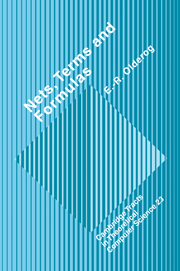Syntax and Semantics of Petri Nets
Petri nets are one of the most popular tools for modeling distributed systems. This book provides a modern look at the theory behind them, by studying three classes of nets that model (i) sequential systems, (ii) non-communicating parallel systems, and (iii) communicating parallel systems. A decidable and causality respecting behavioral equivalence is presented for each class, followed by a modal logic characterization for each equivalence. The author then introduces a suitable process algebra for the corresponding class of nets and proves that the behavioral equivalence proposed for each class is a congruence for the operator of the corresponding process algebra. Finally, an axiomatization of the behavioral congruence is proposed. The theory is introduced step by step, with ordinary-language explanations and examples provided throughout, to remain accessible to readers without specialized training in concurrency theory or formal logic. Exercises with solutions solidify understanding, and the final chapter hints at extensions of the theory.
- Provides a uniform presentation of the theories of sequential and distributed computation
- Introduces the theory step by step using ordinary-language explanations and examples throughout
- Includes exercises to further develop understanding, with solutions in the Appendix
Product details
No date availableHardback
9781009613286
279 pages
244 × 170 mm
Table of Contents
- 1. Introduction
- 2. Sequential systems
- 3. Non-communicating parallel systems
- 4. Communicating systems
- 5. Other equivalences for Petri nets
- 6. Conclusion
- Appendix. Solutions to selected exercises
- References
- Glossary
- Index.






